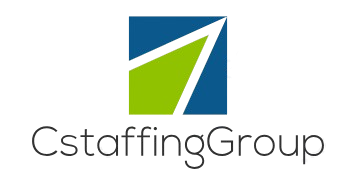Unlocking the Power of Words: Writing Annual Reports for NGOs
As the sun sets on another year, nonprofit organizations around the world gear up to reflect on their accomplishments, challenges, and impact through the lens of an annual report. These reports serve as windows into the soul of an NGO, revealing not just numbers and figures, but stories of change, resilience, and hope. Crafting an annual report for an NGO is no ordinary task – it requires a delicate balance of storytelling, data analysis, and stakeholder engagement. In this comprehensive guide, we delve into the art and science of writing annual reports for NGOs, exploring the intricacies, challenges, and best practices that define this essential communication tool.
The Evolution of Annual Reports

Annual reports have come a long way since their inception in the early 20th century. Originally designed as financial documents to provide transparency to shareholders, annual reports have evolved into powerful storytelling tools for NGOs. Today, annual reports serve a dual purpose – they showcase the financial health of an organization while also highlighting its mission, impact, and future direction. By weaving together narratives of change with financial data, annual reports have the power to inspire donors, engage stakeholders, and build trust with the community.
The Anatomy of an Annual Report

Writing an annual report for an NGO is a multifaceted endeavor that requires careful planning and execution. From the executive summary to the financial statements, each section plays a critical role in conveying the organization’s story. Here are some key components that make up the anatomy of an annual report:
1. Executive Summary

The executive summary is the gateway to the annual report, providing a concise overview of the organization’s achievements, challenges, and goals. This section should capture the reader’s attention and set the tone for the rest of the report.
2. Mission and Vision

The mission and vision statements are the heart and soul of an NGO, guiding its work and inspiring its stakeholders. Including these statements in the annual report helps reinforce the organization’s commitment to its cause.
3. Program Highlights
Program highlights showcase the impact of the organization’s work through real-life stories, testimonials, and case studies. By highlighting specific programs and their outcomes, NGOs can demonstrate the tangible difference they are making in the community.
4. Financial Statements
Financial statements provide a snapshot of the organization’s financial health, including revenue, expenses, and assets. Transparency and accuracy are key when presenting financial data in an annual report, as donors and stakeholders rely on this information to make informed decisions.
5. Governance and Leadership
The governance and leadership section of an annual report highlights the organization’s board of directors, management team, and key staff members. This section demonstrates the organization’s commitment to accountability, transparency, and ethical leadership.
6. Donor Recognition
Donor recognition is a crucial component of an annual report, acknowledging the contributions of individual donors, corporate partners, and grantmakers. By thanking donors and highlighting their impact, NGOs can foster a sense of gratitude and engagement among their supporters.
7. Impact Measurement
Impact measurement is the process of evaluating and quantifying the outcomes of an organization’s programs and services. Including impact measurement data in the annual report helps demonstrate the effectiveness of the organization’s work and its contribution to social change.
The Power of Storytelling
At the heart of every successful annual report lies a compelling story. Stories have the power to connect with readers on an emotional level, making the organization’s work more relatable and memorable. By incorporating storytelling techniques such as narrative arcs, character development, and conflict resolution, NGOs can bring their impact to life in a way that resonates with donors and stakeholders.
One example of effective storytelling in an annual report is charity: water’s annual report. This nonprofit organization, which provides clean water to communities in need, uses vivid imagery, powerful testimonials, and interactive graphics to showcase the impact of its work. By putting a human face on the organization’s mission, charity: water’s annual report engages readers and inspires them to take action.
Challenges and Best Practices
Writing an annual report for an NGO is not without its challenges. From balancing storytelling with data analysis to ensuring accuracy and transparency, there are many factors to consider when crafting this essential document. Here are some best practices to help NGOs overcome common challenges and create impactful annual reports:
1. Know Your Audience
Before diving into the writing process, it’s crucial to understand who your audience is and what they are looking for in an annual report. Tailoring the content and tone of the report to your audience’s preferences and interests can help increase engagement and make the information more accessible.
2. Tell a Compelling Story
Storytelling is at the core of an effective annual report. By weaving together narratives of impact, struggles, and triumphs, NGOs can create a powerful and engaging story that resonates with readers. Incorporating real-life examples, testimonials, and visuals can bring the organization’s work to life and make it more relatable.
3. Use Data Wisely
While storytelling is important, data also plays a crucial role in an annual report. Using data to support your organization’s claims, demonstrate impact, and showcase financial health can help build credibility and trust with donors and stakeholders. Visualizing data through charts, graphs, and infographics can make complex information more digestible and engaging.
4. Focus on Transparency and Accountability
Transparency and accountability are key principles that should guide the writing of an annual report. Providing accurate and up-to-date information, acknowledging challenges and failures, and outlining plans for improvement can help build trust and credibility with stakeholders. Addressing any controversies or debates head-on can demonstrate the organization’s commitment to transparency and ethical practices.
5. Engage Stakeholders
Engaging stakeholders throughout the annual report writing process can help ensure that the document reflects their interests and concerns. Seeking feedback, input, and collaboration from donors, board members, staff, and beneficiaries can enrich the content of the report and make it more inclusive and representative of the organization’s work.
The Future of Annual Reports
As technology continues to evolve and communication tools advance, the future of annual reports for NGOs is likely to undergo significant changes. From interactive digital reports to data visualization tools, NGOs have a plethora of options to choose from when it comes to presenting their impact and outcomes. Embracing innovation, creativity, and storytelling in annual reports can help NGOs stay relevant, engaging, and impactful in an increasingly competitive landscape.
Conclusion
To wrap things up, writing an annual report for an NGO is a complex and rewarding endeavor that requires a blend of creativity, data analysis, and stakeholder engagement. By telling compelling stories, showcasing impact, and fostering transparency, NGOs can create annual reports that inspire, inform, and engage their audiences. As we look towards the future, the role of annual reports in shaping the narrative of NGOs will continue to evolve, offering new opportunities for organizations to connect with donors, stakeholders, and communities.




